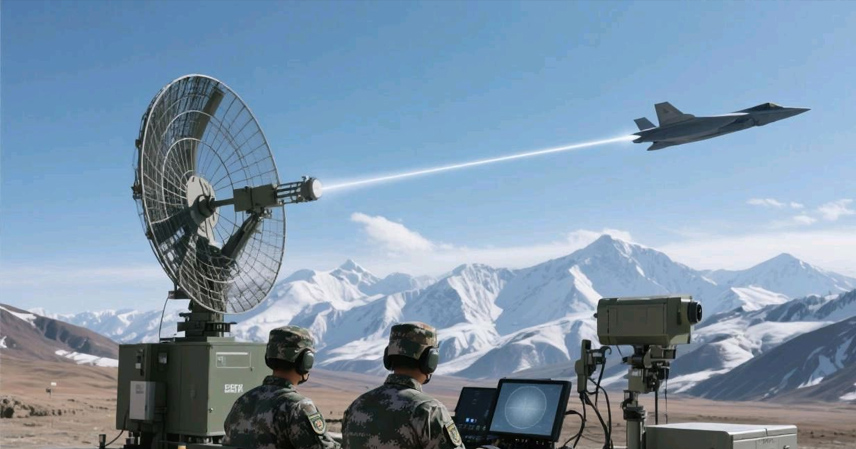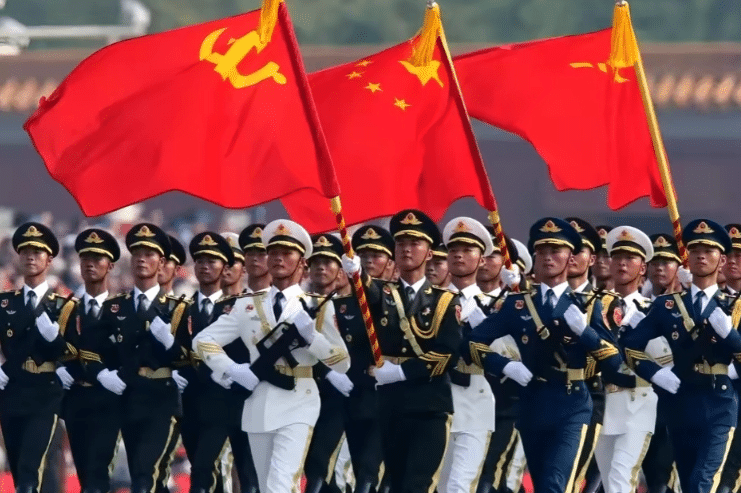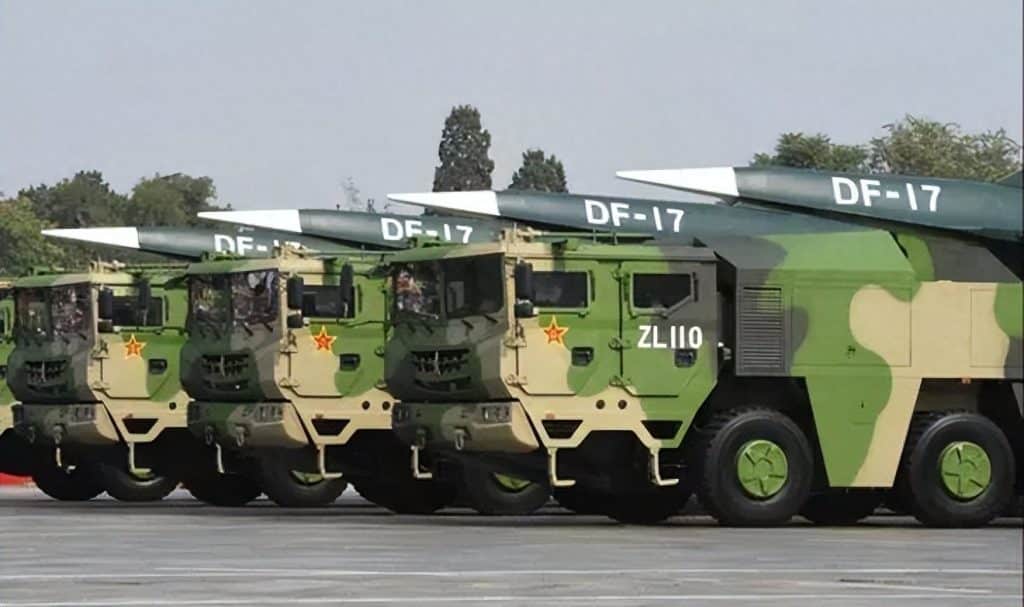A New “Photon Catcher” Shakes the Defense World
On October 10, 2025, the Quantum Information Engineering Technology Research Center in Anhui, China, announced a milestone that stunned the global defense community — the world’s first four-channel ultra-low-noise semiconductor single-photon detector had entered mass production.
Nicknamed the “photon catcher,” this core device can detect a single photon even amid intense background noise — much like hearing a grain of sand fall during a storm. More importantly, it marks the transition of quantum radar technology from lab testing to practical deployment, posing a potential challenge to the U.S. Air Force’s stealth fleet, including the F-22 and F-35.
How Quantum Radar Defeats Stealth
Stealth aircraft are not truly invisible — they use radar-absorbent materials and special airframe designs to scatter electromagnetic waves, reducing radar cross-sections to less than 0.001 square meters, equivalent to a bird.
However, quantum radar changes the game entirely. Instead of continuous electromagnetic waves, it emits pairs of entangled photons. One photon remains as a reference while its twin travels through the airspace. When the target reflects the signal, even if partially absorbed, its quantum state changes in a way that cannot be hidden. Comparing the two photons allows the radar to identify and track stealth objects with unprecedented accuracy.
This gives quantum radar three revolutionary advantages:
- Exceptional resistance to jamming – Quantum states cannot be cloned or spoofed, rendering traditional electronic warfare ineffective.
- Ultra-high sensitivity – It can detect single photons, extending effective range up to three times that of conventional radar.
- Low emission stealth – Operating power is less than one-thousandth of traditional radar, making it difficult to detect by enemy sensors.
The new four-channel single-photon detector enhances these capabilities. Unlike traditional single-channel models, it can simultaneously process photons from multiple directions and wavelengths. With deep-cooling technology at –120 °C, its dark noise is reduced by 90%, and detection efficiency reaches 35%. Compact in size — just one-ninth of global equivalents — it can now be integrated into fighters, drones, and naval vessels, overcoming the long-standing issue of bulky radar systems.
From Laboratory to Battlefield: China’s Nine-Year Leap
China’s rise in quantum radar began in 2016, when the China Electronics Technology Group (CETC), in partnership with top universities, built the first prototype capable of detecting distant targets using single-photon technology.
By 2018, the CETC’s 27th Research Institute successfully tested long-range detection, while its 14th Institute unveiled the YLC-8B meter-wave radar, known for spotting F-22s hundreds of kilometers away. Together, these efforts formed a multi-layered anti-stealth detection system combining quantum and conventional radar.
In 2025, progress accelerated. The new-generation quantum radar completed real-combat trials, locking onto stealth targets such as F-35s and B-2s at ranges exceeding 800 km. Then, in October, mass production of the four-channel detector eliminated the last bottleneck for large-scale deployment.
Meanwhile, researchers at the University of Science and Technology of China (USTC) achieved 3D imaging of a target 45 km away, laying groundwork for airborne quantum radar.
Behind this success is China’s integrated model — universities drive theory, provincial institutes focus on key components, and private firms handle industrialization and scaling. This tight coordination of “research + engineering + production” has enabled China to convert laboratory innovation into field-ready systems at remarkable speed.
U.S. Lag: Strong in Theory, Weak in Engineering
In contrast, the United States — despite its early theoretical leadership — now faces what analysts call a “lab-locked” problem. Institutions like MIT and Caltech made early advances in quantum sensing, yet their detectors remain single-channel, bulky, and costly, requiring extreme cryogenic cooling.
DARPA’s 2024 Quantum Sensing Program prototype reportedly had a detection range of only 60 km and required fixed installation — a stark contrast to China’s mobile, 800 km-range systems.
Moreover, the U.S. defense industry lacks a domestic mass-production supply chain for such components. High-end detectors are monopolized by a handful of companies under strict export controls, limiting output. Even as the Pentagon pushes toward sixth-generation aircraft, projects like the F-47 still rely heavily on traditional stealth optimization rather than quantum counter-detection strategies.
The performance gap has already shown operational impact. In September 2025, leaked reports suggested that Chinese J-16 fighters successfully tracked U.S. stealth assets over the Western Pacific — possibly with the aid of quantum-enhanced sensor networks. While details remain classified, the incident underscored a sobering reality: America’s stealth advantage may be eroding.
Quantum Technology Reshapes Aerial Warfare
The mass production of the four-channel detector could reshape the future of air combat.
Stealth aircraft designed for “first-strike invisibility” will lose much of their tactical edge if detected hundreds of kilometers away. The U.S. may need to invest in quantum-resistant materials, or shift toward hypersonic and electronic warfare capabilities — all at far greater cost.
In the Asia-Pacific, widespread Chinese deployment of quantum radar could diminish U.S. air dominance, while J-20 fighters equipped with airborne quantum sensors could achieve first-look, first-strike capabilities.
Beyond defense, quantum photonics may soon power missile guidance, satellite imaging, and unmanned reconnaissance. With USTC already demonstrating 45 km-range 3D quantum imaging, precision targeting could reach unprecedented levels.
Challenges remain — photon scattering in heavy weather and the complexity of scaling quantum systems are real — but China’s success in mass-producing core components provides the foundation for rapid iteration and deployment.
Conclusion: Entering the Quantum Defense Era
From the Mozi quantum satellite to nationwide quantum communication networks, and now to deployable quantum radar, China has built a self-sustaining innovation ecosystem. The successful mass production of the four-channel photon detector not only breaks international monopolies but also demonstrates China’s growing technological self-reliance in critical defense domains.
As Defense News noted, “The myth of stealth may end not with a missile, but with a photon.”
The age of quantum defense has begun — and China is leading the race.
References
- Defense News (2025). Quantum Radar Technologies in Modern Warfare
- South China Morning Post (2025). China Mass-Produces Single-Photon Detectors for Quantum Radar
- MIT Technology Review (2024). Why Quantum Radar Is So Hard to Build
- Global Times (2025). China’s Quantum Leap in Anti-Stealth Systems
- DARPA Quantum Sensing Program Report (2024)



